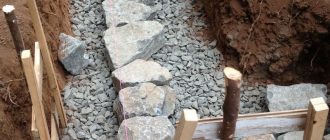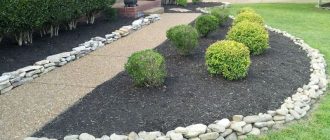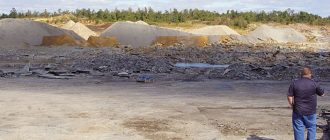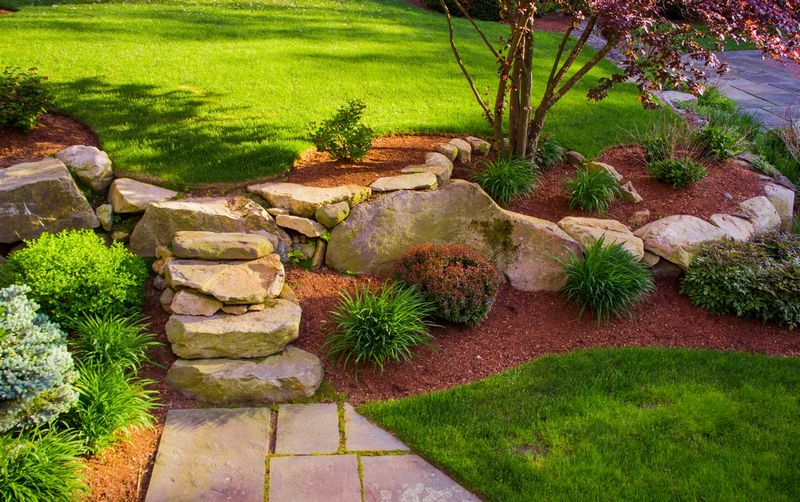
How to Choose the Best Landscaping Rocks for Your Project
When it comes to landscaping, the type of rocks you choose can make all the difference. Whether you’re looking to create a stunning focal point or add texture and depth to your outdoor space, selecting the best rocks for your project is essential. With so many options available, it can be overwhelming to know where to start. That’s why we’ve put together these five tips to help you choose the perfect landscaping rocks.
1. Consider the purpose: Before selecting rocks for your landscaping project, consider what purpose they will serve. Are you looking to create a pathway, build a retaining wall, or simply add decorative elements? Understanding the purpose will help you determine the size, shape, and type of rocks that will work best.
2. Think about the style: Different styles of landscaping require different types of rocks. If you’re aiming for a natural and organic look, consider using river rocks or boulders. For a more modern and contemporary design, sleek and angular rocks like flagstone or quartzite may be a better choice. Consider the overall aesthetic you want to achieve and select rocks that complement that style.
3. Evaluate the color: The color of the rocks can have a significant impact on the overall look of your landscaping. Neutral colors like gray, beige, and brown are versatile and can work with a variety of design styles. However, don’t be afraid to experiment with bolder colors like red or blue if you want to make a statement. Consider the existing colors in your outdoor space and choose rocks that will enhance the overall color scheme.
4. Think about maintenance: Some rocks require more maintenance than others. For example, certain types of limestone may need to be sealed to prevent staining or erosion. Consider the level of maintenance you’re willing to commit to and choose rocks accordingly. If you prefer low-maintenance options, look for rocks that are durable and resistant to weathering.
5. Get expert advice: If you’re unsure about which rocks to choose, don’t hesitate to seek advice from a landscaping professional. They can offer valuable insights based on their experience and help you select the perfect rocks for your project. They can also provide guidance on proper installation techniques to ensure your landscaping rocks are placed correctly and securely.
In conclusion, selecting the perfect landscaping rocks for your project requires careful consideration of the purpose, style, color, and maintenance requirements. By following these five tips and seeking expert advice when needed, you can create a stunning outdoor space that reflects your personal style and enhances the beauty of your home.
Choosing the Right Landscaping Rocks
When it comes to landscaping, choosing the best rocks for your project is crucial. The right rocks can enhance the overall aesthetic appeal of your outdoor space and provide a solid foundation for your landscape design. Here are some tips to help you choose the perfect landscaping rocks:
- Consider the overall theme: Before you start browsing through the different types of rocks, it’s important to consider the overall theme and style of your landscaping project. Are you going for a modern and sleek look, or do you prefer a more natural and rustic feel? Understanding the theme will help you narrow down your options and select rocks that complement your desired style.
- Think about the size and shape: The size and shape of the landscaping rocks will greatly impact the final look of your outdoor space. Larger rocks can make a dramatic statement and are perfect for creating focal points, while smaller rocks can be used to fill in gaps and add texture. Consider the scale of your project and choose rocks that are proportionate to the surrounding landscape.
- Pay attention to color: The color of the rocks you choose can greatly affect the overall ambiance of your outdoor space. If you want to create a vibrant and colorful landscape, opt for rocks in various shades and hues. On the other hand, if you prefer a more calming and tranquil environment, stick to rocks in neutral tones. Consider the existing colors in your yard and select rocks that complement the surroundings.
- Consider the maintenance: Different types of rocks require different levels of maintenance. Some rocks may need regular cleaning or repositioning, while others may require minimal or no maintenance at all. Take into account your willingness and availability to maintain your landscaping rocks, and choose accordingly.
- Think about the functionality: In addition to aesthetics, consider the functionality of the rocks you choose. Are you using them for erosion control, as a walkway, or as a decorative feature? Make sure the rocks you select are suitable for the intended purpose and can withstand the elements and traffic.
By following these tips, you can confidently choose the right landscaping rocks for your project and create a beautiful and functional outdoor space.
Consider the Size and Shape
When choosing landscaping rocks for your project, it’s important to consider the size and shape of the rocks. The best rocks for your project will depend on the specific needs and aesthetic you are trying to achieve.
For example, if you are creating a pathway or walkway, you will want to choose rocks that are smooth and small in size. This will ensure that the rocks are comfortable to walk on and won’t cause any tripping hazards. On the other hand, if you are looking to create a focal point in your garden or yard, you might consider larger rocks with unique shapes and textures.
Additionally, consider the overall size of your project. If you have a large area to cover, smaller rocks might get lost and overwhelmed. In this case, larger rocks will make a bigger impact and fill the space more effectively. On the other hand, if you have a smaller area to work with, smaller rocks will create a more cohesive and balanced look.
Ultimately, the size and shape of the landscaping rocks you choose will have a big impact on the overall look and feel of your project, so take your time to carefully consider your options before making a decision.
Think About the Color Palette
When choosing the best landscaping rocks for your project, one important factor to consider is the color palette. The color of the rocks you choose can greatly impact the overall look and feel of your outdoor space.
It’s essential to select rocks that complement the existing colors in your yard or garden. If you have a warm color scheme with reds, oranges, and yellows, consider choosing rocks that have similar hues. On the other hand, if you have a cool color palette with blues, greens, and purples, opt for rocks in those tones.
Another option is to create contrast by choosing rocks that are the opposite of your existing color scheme. For example, if you have mostly light-colored plants and flowers, selecting dark-colored rocks can create a striking visual contrast.
To help you visualize the effect of different rock colors, it’s a good idea to gather samples and place them in your yard or garden. This will allow you to see how the rocks interact with the surrounding colors and make an informed decision.
Remember that the color of your landscaping rocks will also affect their heat-absorbing properties. Lighter-colored rocks tend to reflect heat, while darker rocks absorb it. Consider your climate and how the rocks will affect the overall temperature in your outdoor space.
By carefully considering the color palette and choosing rocks that complement or contrast with your existing colors, you can create a visually appealing and harmonious outdoor environment.
Assess the Texture and Finish
When choosing the best rocks for your landscaping project, it’s important to assess the texture and finish of the rocks. The texture refers to the surface characteristics of the rocks, such as smoothness or roughness. The finish, on the other hand, describes the appearance of the rocks, including whether they have a polished or natural look.
First, consider the texture of the rocks. For example, if you’re creating a pathway or driveway, you’ll want to choose rocks that have a smooth texture to ensure a comfortable surface for walking or driving. On the other hand, if you’re looking to create a more rustic or natural-looking landscape, rocks with a rough texture can provide a more authentic and organic feel.
In addition to the texture, think about the finish of the rocks. A polished or shiny finish can add a touch of elegance and sophistication to your landscaping project. This is particularly beneficial if you’re using rocks as a decorative element in a garden or outdoor living space. Alternatively, if you’re aiming for a more casual or natural-looking landscape, rocks with a more rough or natural finish can help achieve that desired aesthetic.
Ultimately, when assessing the texture and finish of landscaping rocks, choose options that align with your overall design vision and goals. Remember that the texture and finish of the rocks will play a significant role in the overall look and feel of your landscaping project.
Evaluate the Durability
When choosing landscaping rocks for your project, it is important to evaluate their durability. You want rocks that will withstand the elements and last for a long time. Consider factors such as the type of rock, its hardness, and resistance to erosion. Some rocks may be more prone to cracking or crumbling over time, while others may be highly durable and resistant to weathering.
One way to evaluate the durability of rocks is to look at their composition. Certain types of rocks, such as granite or limestone, are known for their strength and durability. Rocks like sandstone or shale may be softer and more prone to breaking. Additionally, you can consider the rock’s hardness on the Mohs scale, which ranks minerals from 1 to 10 based on their scratch resistance.
Another factor to consider is the rock’s resistance to erosion. If your landscaping project involves an area with heavy rainfall or water runoff, you will need rocks that can withstand water and prevent erosion. Look for rocks that are resistant to weathering and will not break down easily when exposed to water or other elements.
By evaluating the durability of the rocks you choose for your landscaping project, you can ensure that they will withstand the test of time and provide long-lasting beauty to your outdoor space.
Take Maintenance into Account
When selecting the best landscaping rocks for your project, it’s important to consider the amount of maintenance they will require. Some rocks may require more maintenance than others, so it’s important to choose rocks that fit your desired level of upkeep.
For example, smooth river rocks may look beautiful in your garden, but they can also trap dirt and debris, which can be difficult to clean. On the other hand, rough and jagged rocks may be easier to maintain, as they are less likely to collect debris and can be easily cleaned with a hose or broom.
Another factor to consider is the porosity of the rocks. Porous rocks, such as limestone, can absorb moisture and may develop mold or algae over time. This can be especially problematic in humid or wet climates. If you prefer low-maintenance rocks, it’s best to choose non-porous options like granite or quartzite.
Additionally, take into account the size and weight of the rocks. Larger rocks may require heavy machinery to install or move, which can add to the overall cost and effort of your landscaping project. Smaller rocks, like pea gravel, are easier to handle and can be more cost-effective.
To minimize maintenance, consider using a weed barrier or landscape fabric underneath the rocks. This can help prevent weeds from growing through the rocks and make it easier to remove any that do pop up. Regularly inspect the area and remove any weeds or debris to keep your landscaping rocks looking their best.
Determine the Budget
Before starting your landscaping project, it is important to determine your budget. Knowing how much you are willing to spend will help you choose the best landscaping rocks for your project.
Landscaping rocks can vary in price depending on their size, type, and quality. It is essential to consider these factors when setting your budget.
First, decide how much money you are willing to invest in landscaping rocks. This will help you narrow down your options and choose materials that are within your price range.
Next, research the cost of different types of rocks. Some rocks may be more affordable than others, so it is crucial to compare prices and consider the overall cost of the project.
Additionally, consider the delivery cost of the rocks. This can vary depending on the supplier and distance, so make sure to include it in your budget calculations.
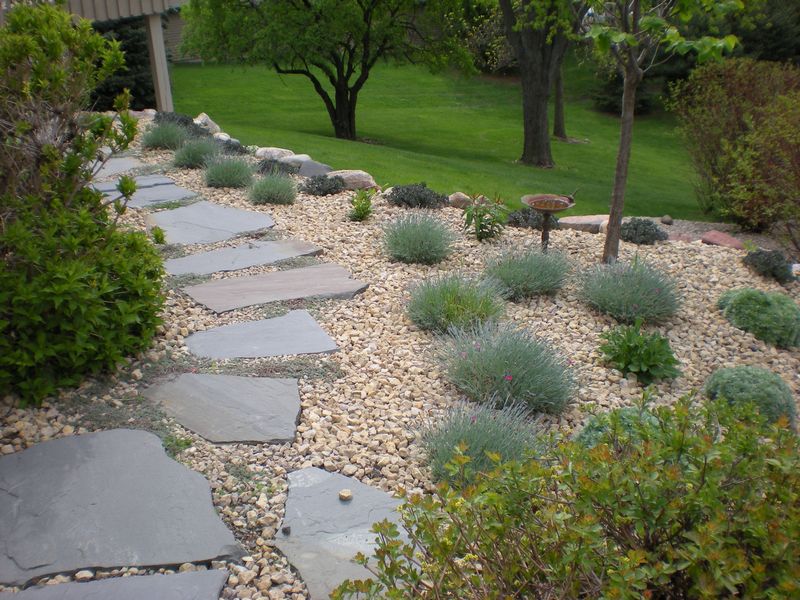
Finally, factor in any additional costs such as labor, equipment, and other landscaping materials. These expenses should be considered to ensure that your budget covers all aspects of the project.
By determining your budget beforehand, you can make an informed decision and choose landscaping rocks that fit your project and financial constraints. It will help you create a beautiful landscape without breaking the bank.
Research Local Regulations
Before selecting landscaping rocks for your project, it’s important to research and understand any local regulations that may affect your choices. Different areas may have specific rules and guidelines regarding the use of rocks for landscaping purposes.
Some cities or homeowner associations may have restrictions on the types of rocks that can be used, the size or height of rock installations, or the placement of rocks in certain areas. It’s essential to familiarize yourself with these regulations to ensure that the rocks you select align with the requirements.
By doing your due diligence and researching local regulations, you can avoid any potential issues or fines that may arise from using rocks that are not compliant. Additionally, understanding the regulations can help you choose the best rocks for your project that will enhance the aesthetics of your landscaping while meeting any guidelines set forth by your local governing bodies.
Remember: When researching local regulations, check for any permits or permissions that may be required for landscaping projects involving rocks. It’s always better to be safe than sorry!
Consult a Professional
When it comes to landscaping projects, it’s always a good idea to consult a professional. They have the knowledge and expertise to guide you in choosing the best landscaping rocks for your project. A professional will consider factors such as the climate, soil type, and overall aesthetic goals to help you make the right choice.
Plan the Placement
Consider the surrounding elements in your landscaping, such as plants, trees, and other features. The rocks should complement and enhance the existing elements, rather than distract or overpower them. Take into account the size and shape of the rocks you are considering, as well as their color and texture.
Creating a visual mock-up or sketch can be helpful in determining the best placement for the rocks. This will allow you to see how they will fit into the overall design and how they will interact with other elements in the landscape. Consider the balance and proportion of the rocks in relation to the rest of the space.
It’s also important to think about practical considerations, such as drainage and access. If you are using the rocks to create a pathway or walkway, make sure they are positioned in a way that allows for easy and safe passage. Consider how the rocks will affect the flow of water and ensure that they won’t cause erosion or other drainage issues.
By carefully planning the placement of the rocks, you can ensure that they are integrated seamlessly into your landscaping project, creating a beautiful and cohesive design.
Consider the Overall Aesthetics
When choosing the best landscaping rocks for your project, it is important to consider the overall aesthetics you want to achieve. The rocks you choose will play a crucial role in determining the final look and feel of your landscaping design.
Start by identifying the style or theme you want to create in your outdoor space. Are you going for a natural, rustic look? Or do you prefer a modern and sleek design? Understanding your desired aesthetic will help you narrow down the options and make the right choice.
Another aspect to consider is the color palette of your landscaping design. Rocks come in a wide variety of colors, ranging from earthy tones like brown and beige to vibrant hues like red and blue. Choose rocks that complement the colors already present in your outdoor environment to create a harmonious and visually pleasing effect.
In addition to color, think about the size and texture of the rocks. Different sizes can be used to create visual interest and add depth to your landscaping. Smooth rocks can provide a more polished and refined look, while rougher stones can give a rugged and natural appearance.
Finally, consider how the rocks will interact with other elements in your landscaping design. Will they be used as a centerpiece or focal point, or will they be used to define borders or pathways? Take into account the placement and purpose of the rocks to ensure they enhance the overall aesthetics of your project.
| Identify the desired style or theme |
| Choose rocks that complement the color palette |
| Vary the sizes and textures for visual interest |
| Consider the placement and purpose of the rocks |
Q&A:
What are some factors to consider when selecting landscaping rocks?
When selecting landscaping rocks, there are several factors to consider. First, consider the size and shape of the rocks. This will depend on the size of your project and the overall aesthetic you are trying to achieve. Secondly, consider the color of the rocks. You want to choose a color that complements and enhances the surrounding environment. Additionally, think about the type of rocks you want to use. Different types of rocks have different characteristics and can be better suited for certain projects. Lastly, consider the cost and availability of the rocks. It’s important to choose rocks that fit within your budget and are readily available.
How do I determine the size of rocks I need for my landscaping project?
Determining the size of rocks you need for your landscaping project can be done by considering a few factors. First, consider the overall scale and size of your project. If you have a large area to cover, you may want to choose larger rocks to create a bolder statement. On the other hand, if you have a small area, smaller rocks may be more appropriate. Secondly, consider the other elements in your landscaping, such as plants and hardscape features. You want to choose rocks that are in proportion with these other elements. Lastly, consider the practicality of the rocks. If you plan on walking or sitting on the rock surface, smaller rocks may be more comfortable and practical.
What are some popular types of landscaping rocks?
There are several types of landscaping rocks that are popular choices for various projects. One popular type is river rock, which is smooth and rounded by the action of water. This type of rock is often used in water features or to create natural-looking pathways. Another popular type is crushed granite, which is a durable and versatile rock. It can be used for walkways, driveways, and as a base for other landscaping features. Additionally, lava rock is a popular choice for adding a dramatic, textured element to landscapes. Finally, flagstone, which is a flat, layered rock, is often used for creating patios or stepping stones.
How can I find landscaping rocks that fit within my budget?
Finding landscaping rocks that fit within your budget can be done by considering a few strategies. First, shop around and compare prices from different suppliers. Prices can vary significantly, so it’s important to do your research. Additionally, consider using locally sourced rocks, as they may be more affordable than those that have to be shipped from a distance. Another option is to consider recycled or reclaimed rocks, which can often be purchased at a lower cost. Lastly, consider using rocks sparingly and strategically, rather than covering your entire landscape. This can help you stretch your budget while still achieving a beautiful result.



